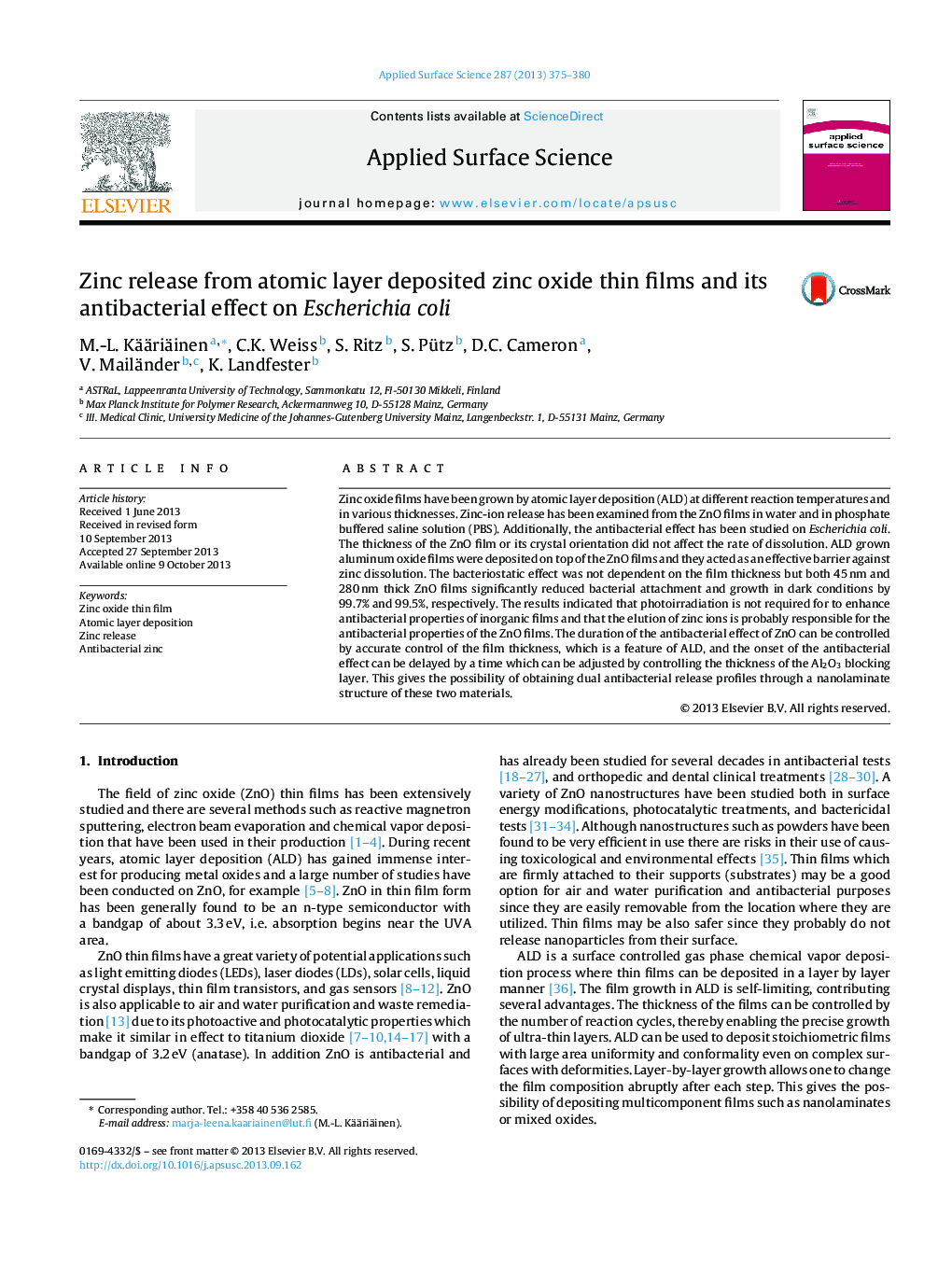| Article ID | Journal | Published Year | Pages | File Type |
|---|---|---|---|---|
| 5359404 | Applied Surface Science | 2013 | 6 Pages |
Abstract
Zinc oxide films have been grown by atomic layer deposition (ALD) at different reaction temperatures and in various thicknesses. Zinc-ion release has been examined from the ZnO films in water and in phosphate buffered saline solution (PBS). Additionally, the antibacterial effect has been studied on Escherichia coli. The thickness of the ZnO film or its crystal orientation did not affect the rate of dissolution. ALD grown aluminum oxide films were deposited on top of the ZnO films and they acted as an effective barrier against zinc dissolution. The bacteriostatic effect was not dependent on the film thickness but both 45Â nm and 280Â nm thick ZnO films significantly reduced bacterial attachment and growth in dark conditions by 99.7% and 99.5%, respectively. The results indicated that photoirradiation is not required for to enhance antibacterial properties of inorganic films and that the elution of zinc ions is probably responsible for the antibacterial properties of the ZnO films. The duration of the antibacterial effect of ZnO can be controlled by accurate control of the film thickness, which is a feature of ALD, and the onset of the antibacterial effect can be delayed by a time which can be adjusted by controlling the thickness of the Al2O3 blocking layer. This gives the possibility of obtaining dual antibacterial release profiles through a nanolaminate structure of these two materials.
Related Topics
Physical Sciences and Engineering
Chemistry
Physical and Theoretical Chemistry
Authors
M.-L. Kääriäinen, C.K. Weiss, S. Ritz, S. Pütz, D.C. Cameron, V. Mailänder, K. Landfester,
